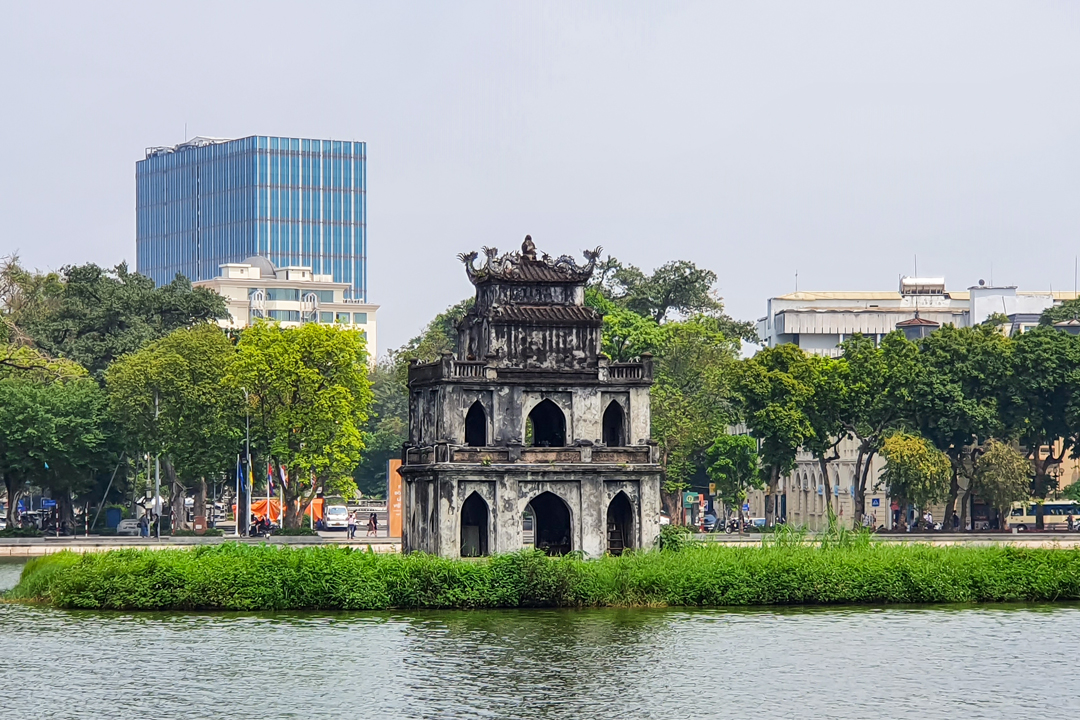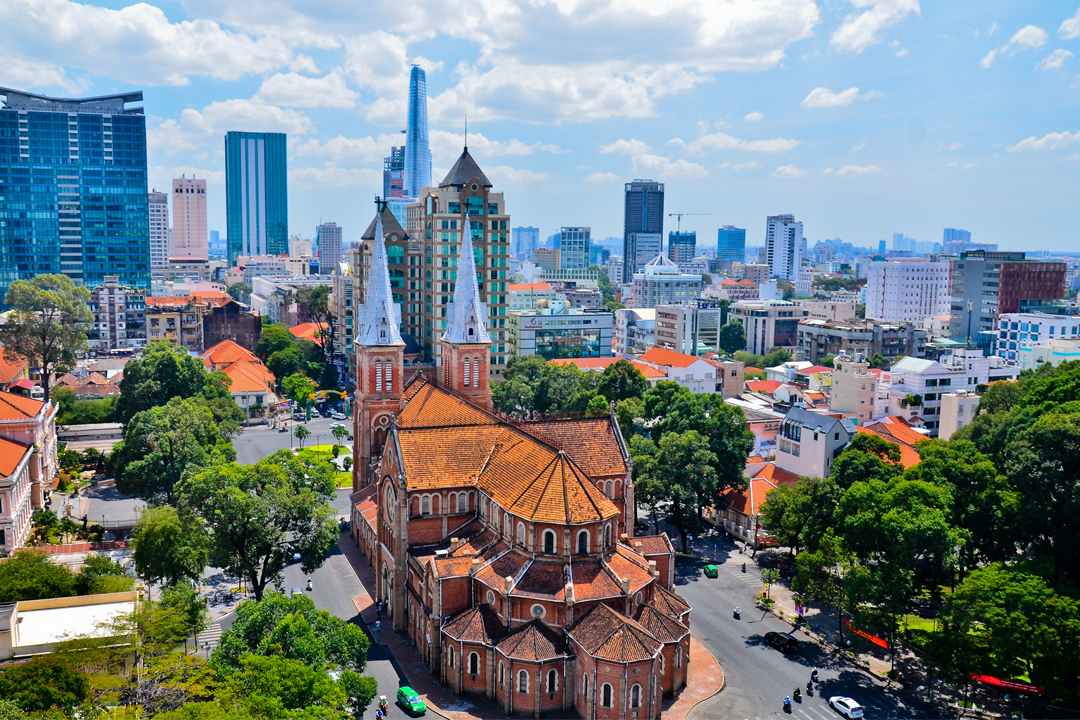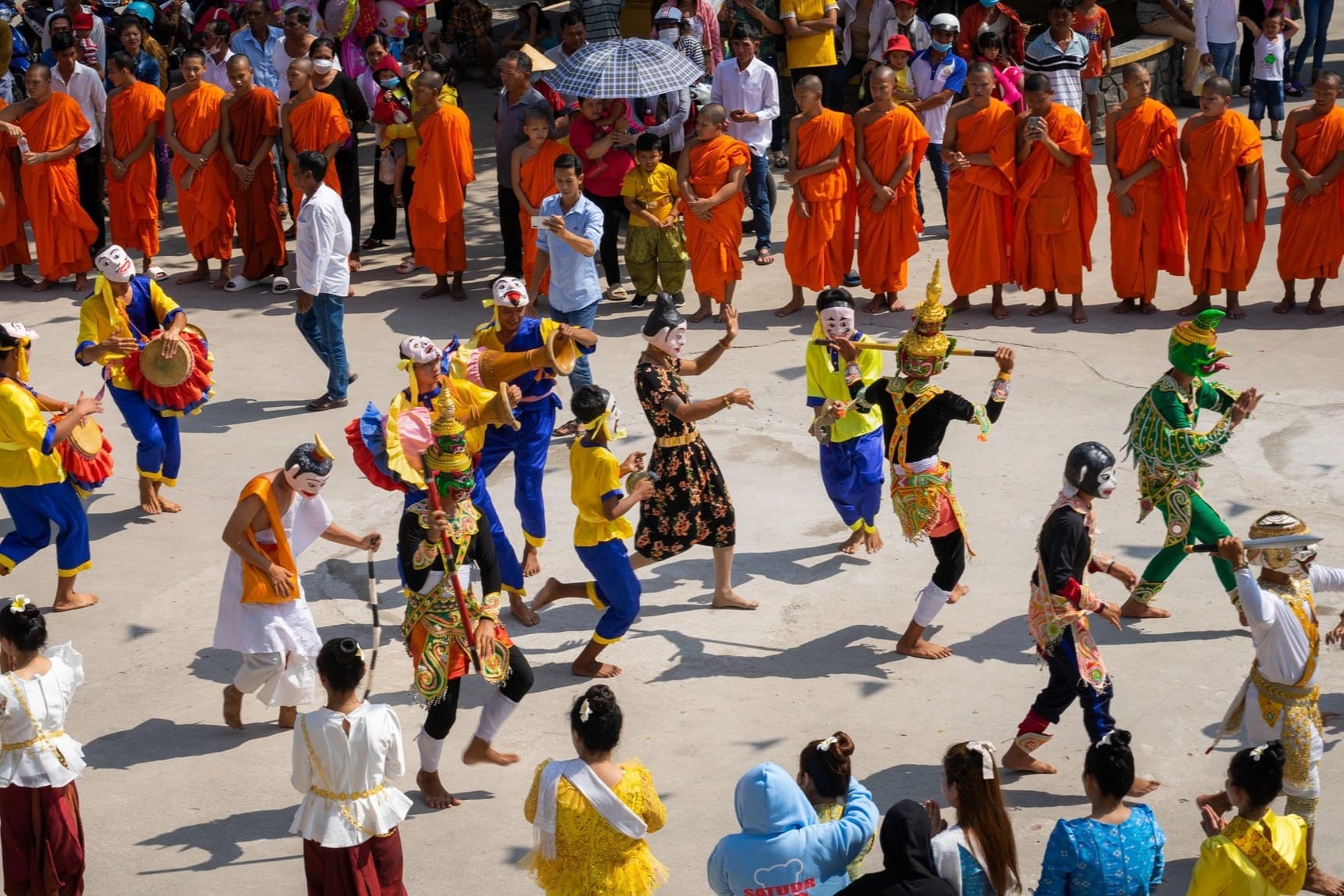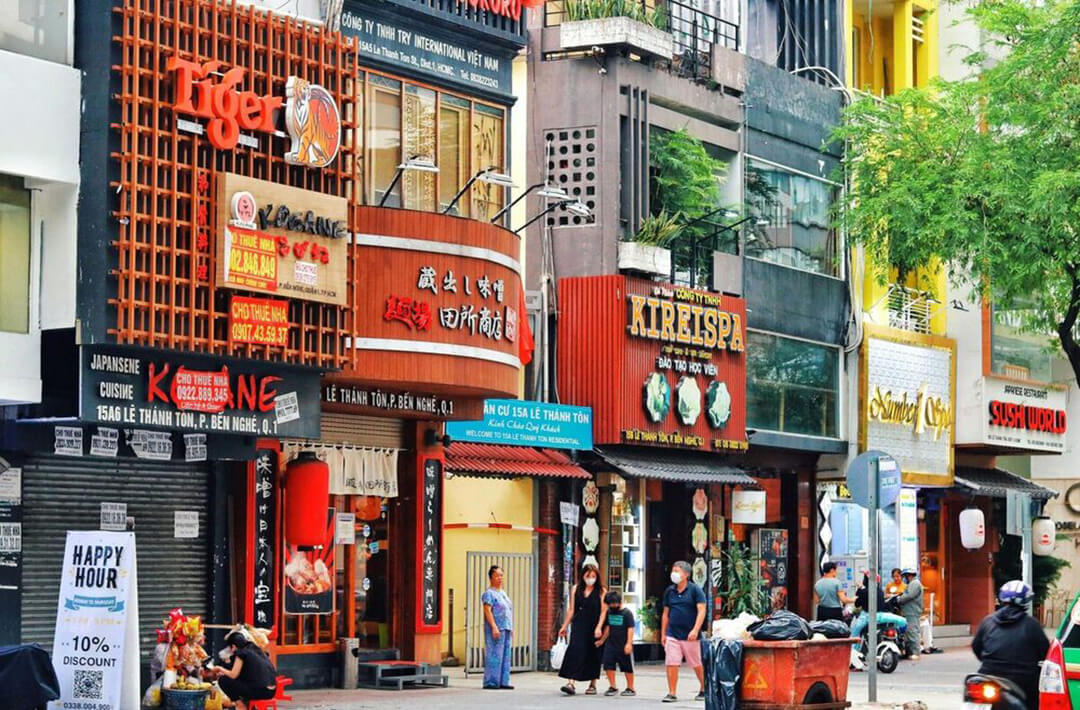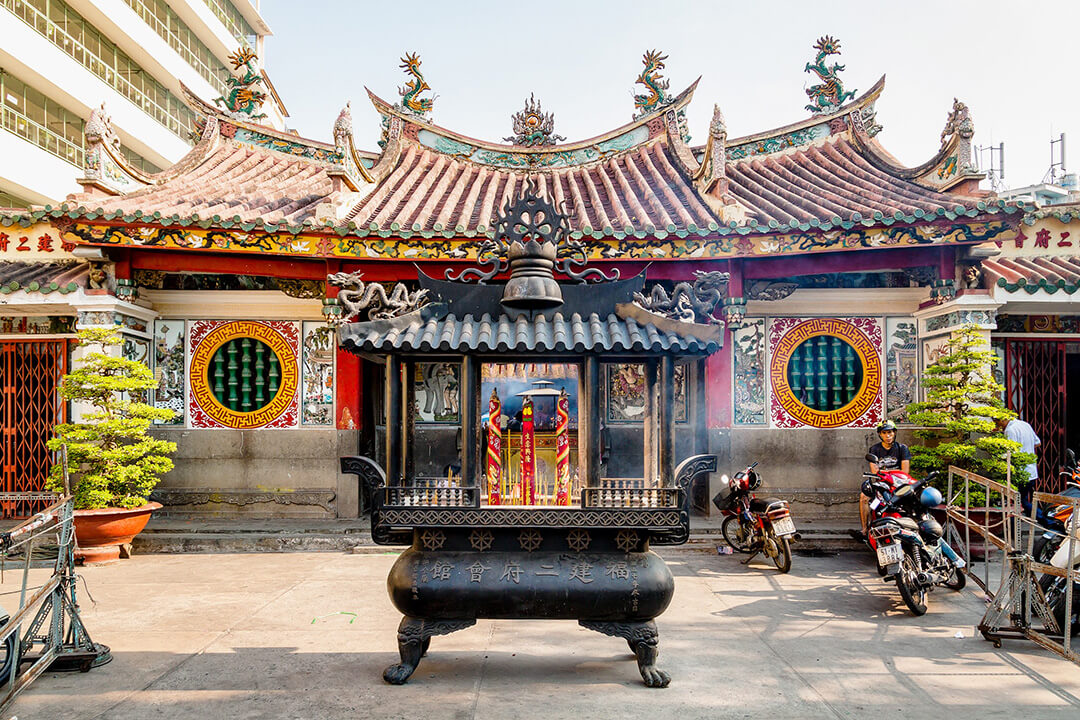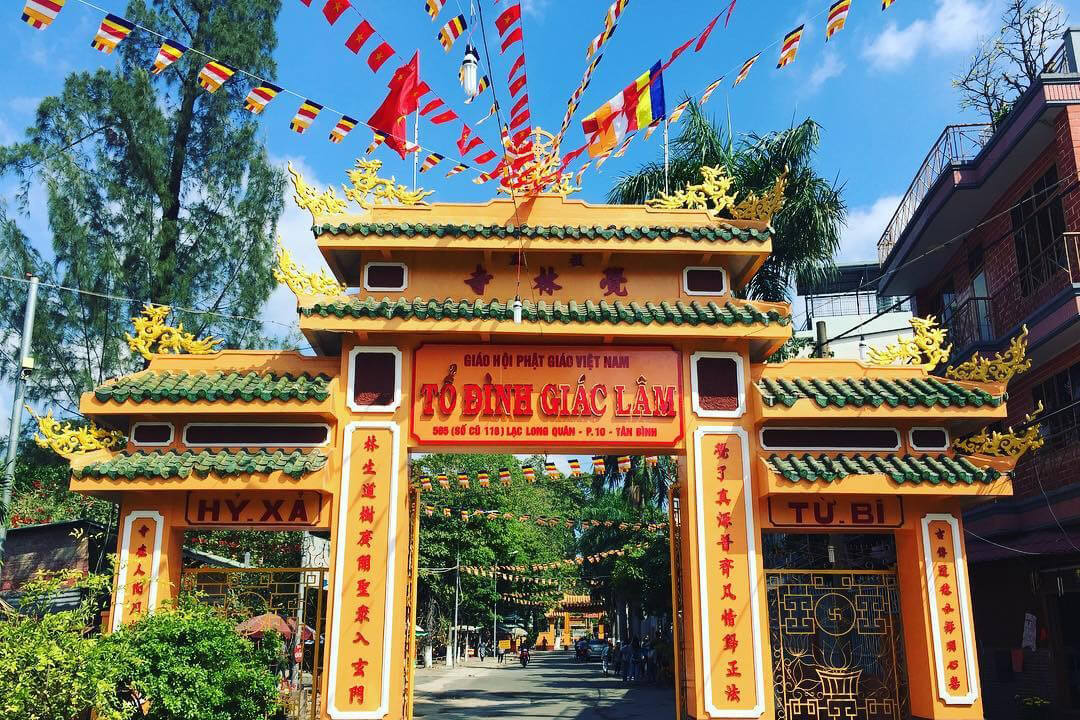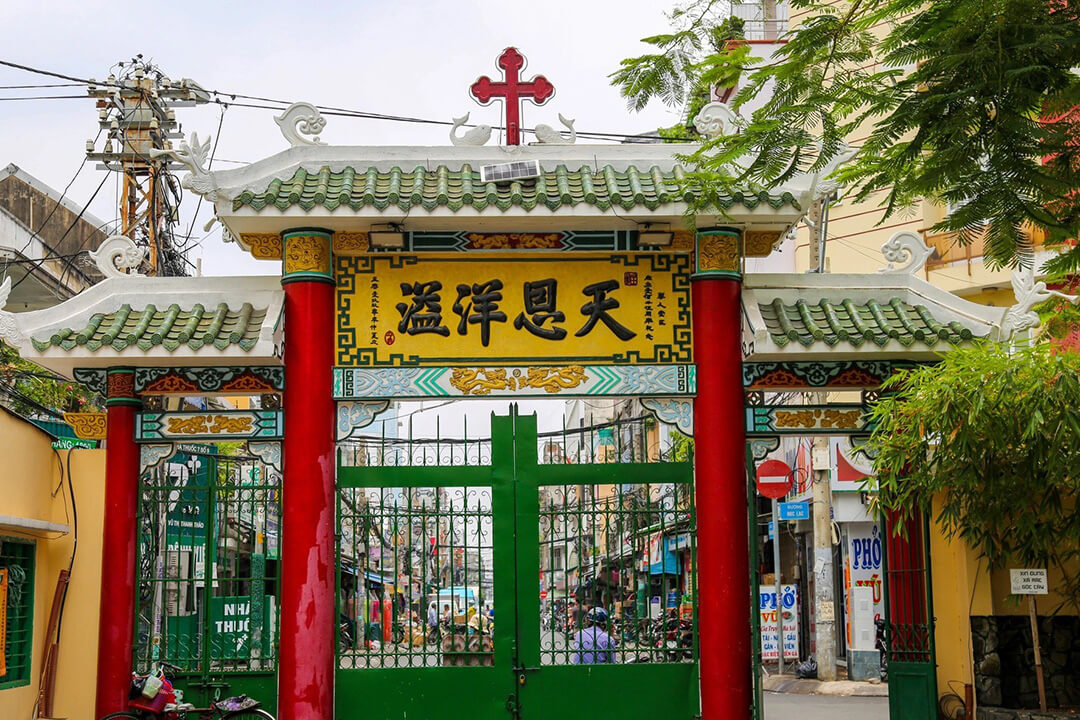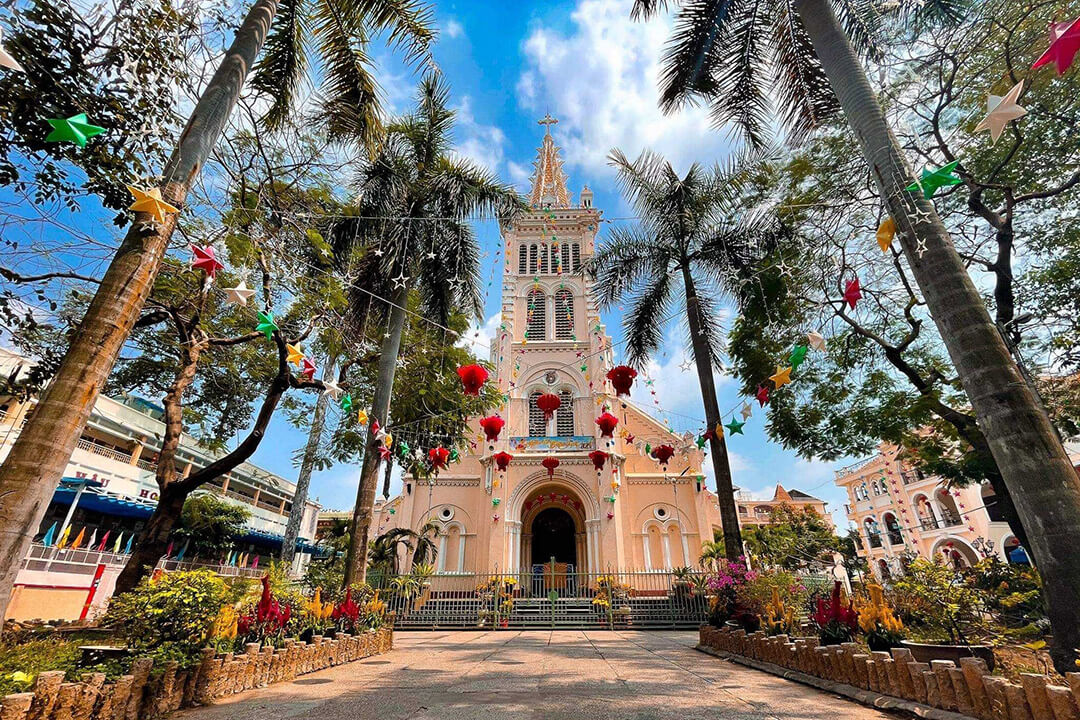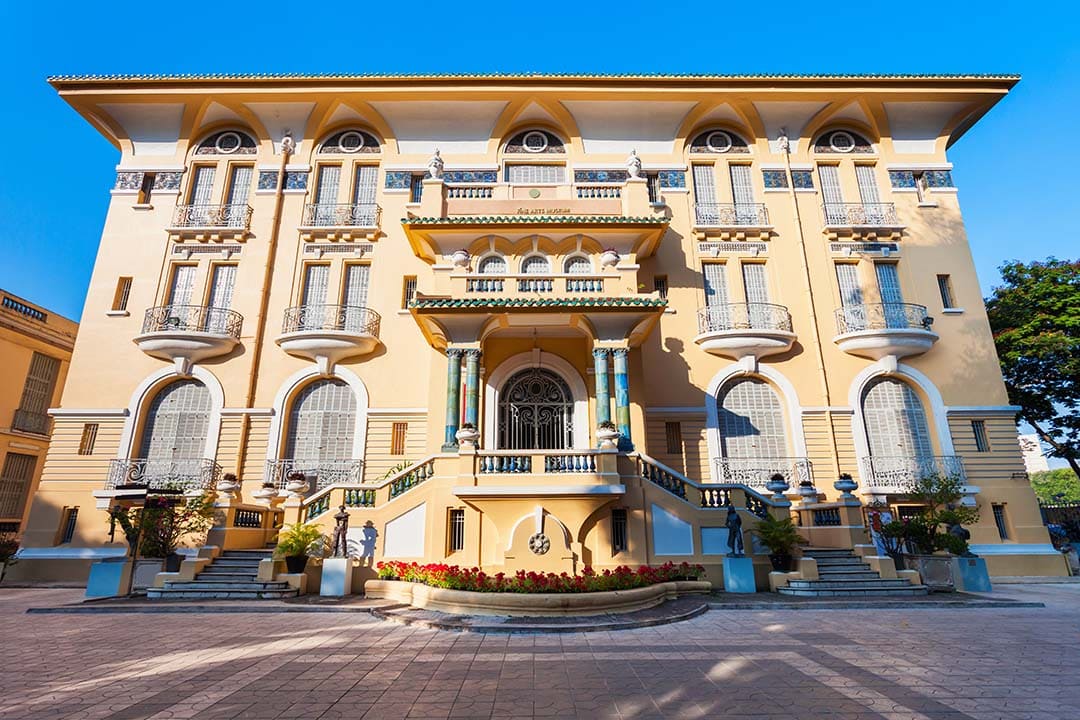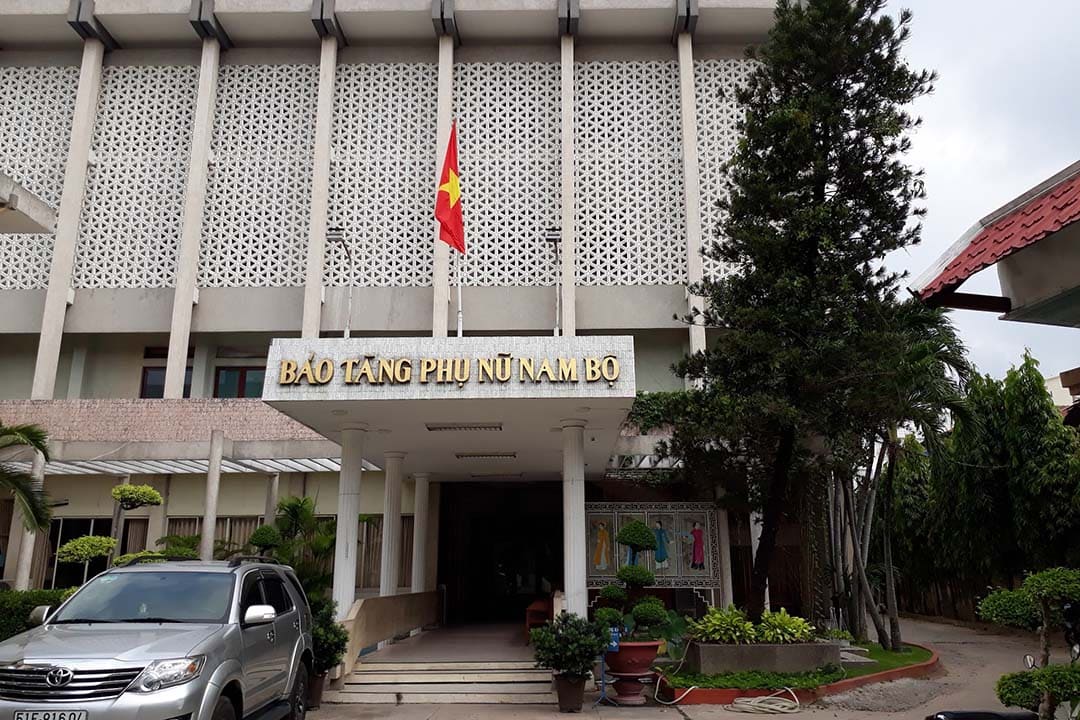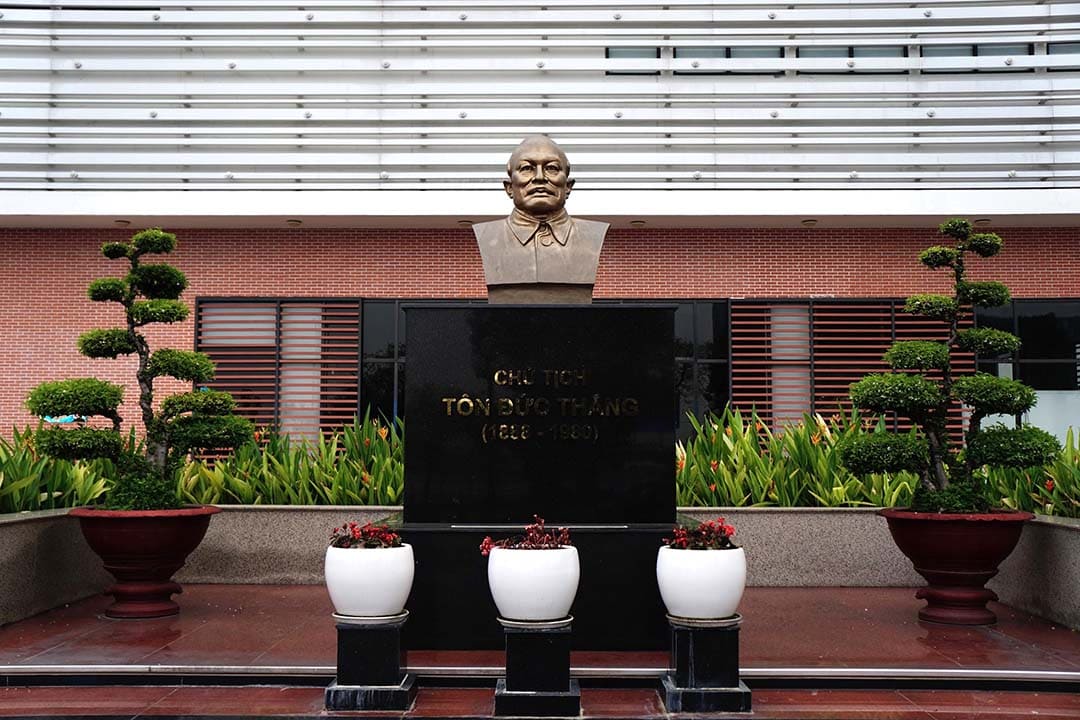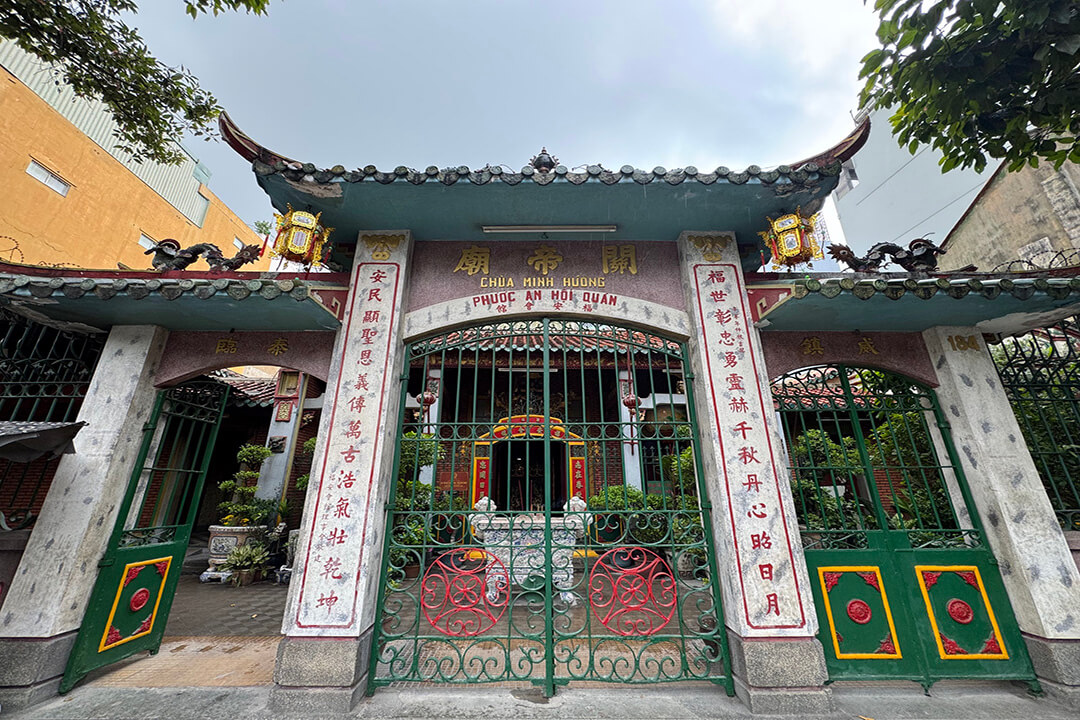Nov - 03 - 2025
Guandi Temple in Ho Chi Minh City is a sacred haven where time seems to stand still. Step through its gates and the scent of sandalwood, ornate carvings, and golden altars instantly transport you from modern Saigon and a world rich in history and devotion. More than just a temple, it’s a living museum and a cultural heart for the local Chinese community. In this GTrip guide, we’ll uncover its 300-year legacy, explore its symbolic architecture, honor the legendary general it venerates, and share insider tips to help you experience this timeless spiritual landmark to the fullest.
An overview of Guandi Temple in Ho Chi Minh City
- Address: 676-678 Nguyen Trai Street, Cho Lon Ward (formerly Ward 11, District 5), Ho Chi Minh City
- Opening hours: 6:00 AM - 5:00 PM daily
- Entrance fee: Free
Guandi Temple (also known as Ong Pagoda, Quan De Shrine, or Nghia An Assembly Hall) is a magnificent Taoist temple located in Ho Chi Minh City's sprawling Chinatown. Revered for its breathtaking architecture and deep spiritual significance, it's officially known as the Nghia An Assembly Hall (Hoi Quan Nghia An), reflecting its historical role as both a place of worship and a community center for the Chaozhou Chinese people. It is also popularly referred to as Ong Pagoda or the Quan De Shrine, names you'll hear frequently from locals.
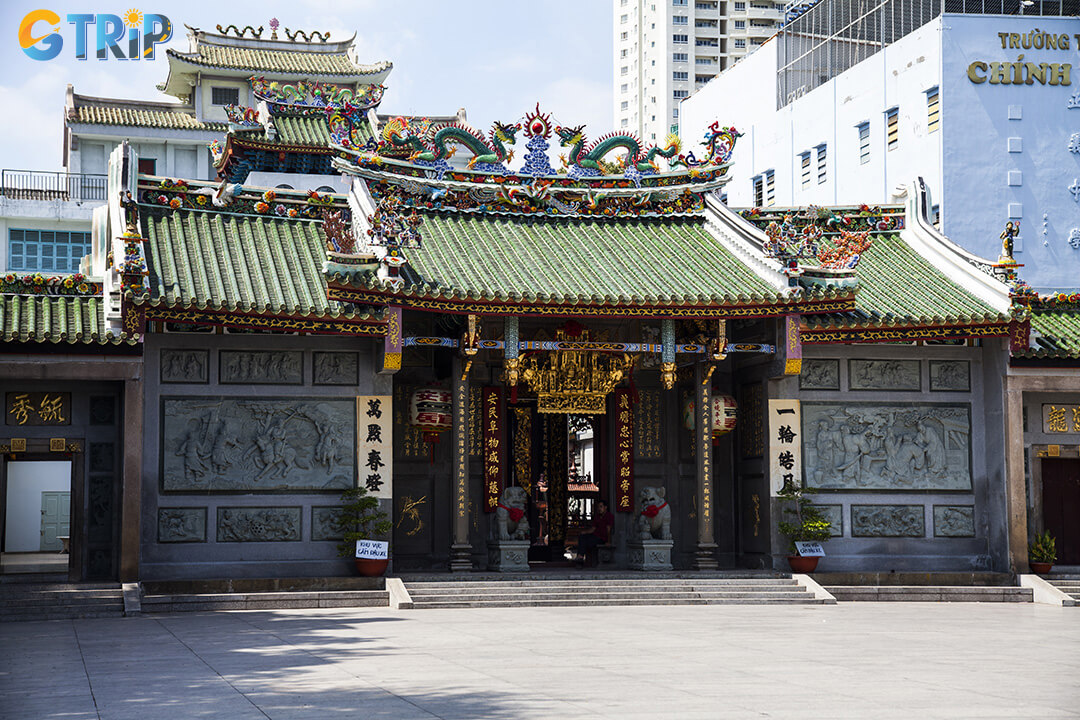
Guandi Temple (Nghia An Assembly Hall) stands as both a spiritual sanctuary and a cultural landmark of the Chaozhou Chinese community in Ho Chi Minh City
Who does Guandi Temple in Ho Chi Minh City worship?
The temple is primarily dedicated to Guan Di (also known as Quan Cong or Quan Van Truong), a real-life general who lived during China's Three Kingdoms period (220-280 AD). Guan Di was later deified and is now worshipped as a god embodying the highest virtues of loyalty, righteousness, courage, and integrity. His story, popularized by the classic novel Romance of the Three Kingdoms, portrays him as an unwavering warrior and a symbol of brotherhood.
For the Chinese community in Vietnam, particularly business owners and families, Guan Di is a revered protector. They pray to him for business success, for protection from harm, and for the strength to uphold moral principles in their daily lives. His imposing statue, often depicted with a red face and a long black beard, is the centerpiece of the temple's main sanctuary, commanding respect and reverence from all who visit.
History of Guandi Temple in Ho Chi Minh City
The history of the Guandi Temple is deeply connected to the story of Chinese migration to Vietnam. The temple was founded in the late 18th century, with major construction and renovations in the 19th and early 20th centuries, by immigrants from the Chaozhou region of Guangdong Province, China. As they settled in the bustling trade hub of Saigon-Cho Lon, they sought to create a spiritual and social anchor for their community.
This is why the temple is also called the Nghia An Assembly Hall. "Nghia An" was the name of the prefecture in China from which the community hailed. The hall served a dual purpose: it was a sacred space for worshipping Guan Di and other deities. It also functioned as a communal meeting place for resolving disputes, conducting business, celebrating festivals, and supporting fellow immigrants. The intricate stone steles found within the temple grounds are historical records inscribed with the names of donors who contributed to its construction and upkeep over the centuries. They offer a tangible link to the temple's enduring community legacy.
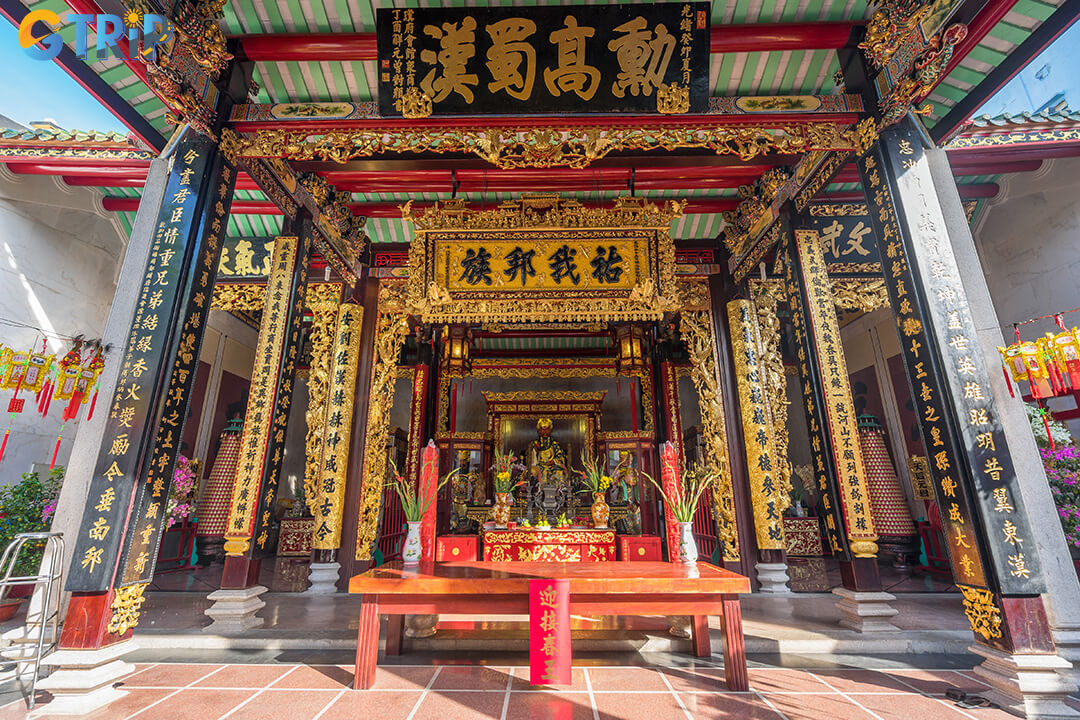
Guandi Temple was founded in the late 18th century as both a place of worship and a vital social hub for Chinese immigrants in Saigon
Architecture of Guandi Temple in Ho Chi Minh City
The temple is a masterclass in traditional Chinese architecture, specifically showcasing the ornate and detailed style of the Chaozhou people. Every element, from the sweep of the roof to the carvings on the doors, is imbued with meaning and artistry.
Exterior architecture of the temple
The first thing that will capture your attention is the temple's magnificent roof. It's a hallmark of Chaozhou design, constructed without a single nail and adorned with countless colorful ceramic figurines. These delicate porcelain figures are not merely decorative, they form elaborate dioramas depicting epic scenes from Chinese history, mythology, and classic literature. You can spend a significant amount of time just admiring the battles, processions, and celestial beings that bring the roofline to life.
The temple is structured in a '工' shape, resembling the Chinese character for "work" or "labor". This layout includes a grand three-part entrance gate, a front courtyard, and a series of interconnected halls. The gateways are guarded by powerful-looking stone lions, and the heavy wooden doors are themselves works of art, painted with fierce-looking deities to ward off evil spirits.
Interior architecture of the temple
Upon entering, you step into a serene open-air courtyard that separates the outside world from the sacred inner sanctuaries. This space is filled with bonsai trees and stone plaques, providing a moment of calm before you proceed. The interior is a symphony of red and gold, colors symbolizing luck, happiness, and prosperity in Chinese culture. Gilded panels, crimson pillars, and intricately carved wooden lattices are everywhere you look.
The temple's layout guides you from the front hall, past the courtyard, and into the main sanctuary. The front hall contains an altar for the Jade Emperor, while the main sanctuary houses the primary altar dedicated to Guan Di. Flanked by his trusted attendant, General Chau Xuong, and his adopted son, Guan Binh, the statue of Guan Di sits majestically behind a veil of incense smoke. To the sides, you’ll find smaller altars for other important deities, including the God of Fortune and the God of Finance.
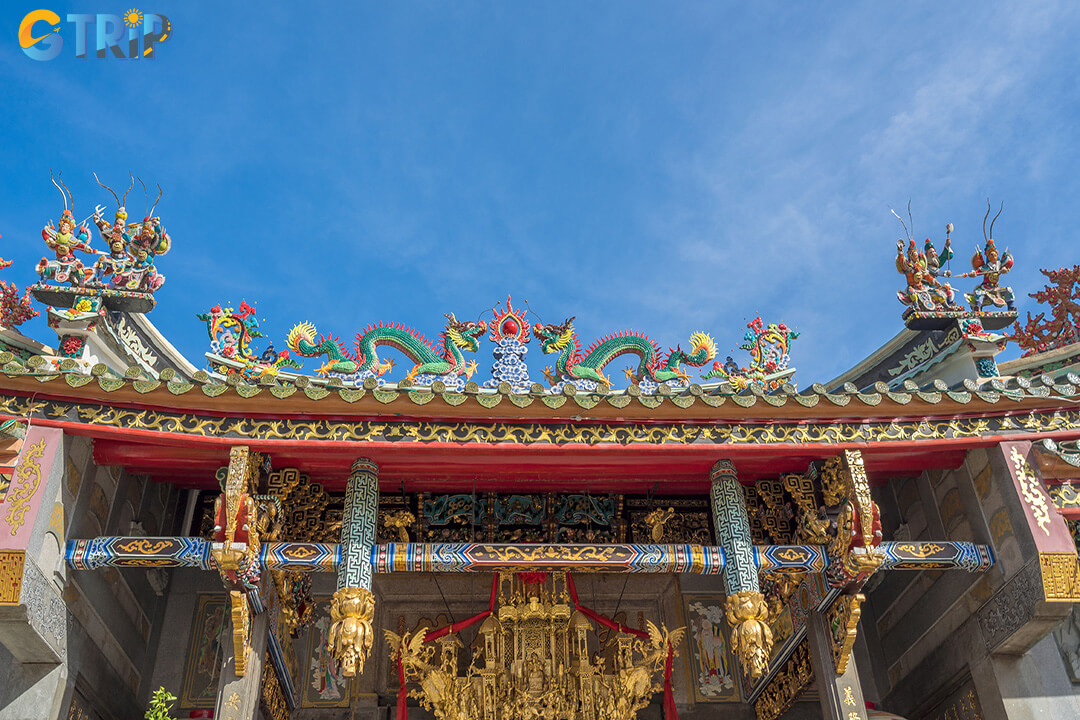
Enter a tranquil courtyard leading to ornate halls of red and gold, where Guan Di’s grand altar and intricate carvings embody timeless Chinese devotion and artistry
Highlights that make Guandi Temple attractive
Beyond its grand structure, the temple is filled with captivating details and cultural elements that visit here so memorable. Each object tells a story and contributes to the temple's sacred atmosphere.
Impressive architectural details
Look up as you walk through the main hall, and you'll see one of the temple's most unique features: large, exquisitely carved wooden boats hanging from the ceiling. These models represent the ships that carried the Chaozhou immigrants across the sea from China to Vietnam. They are a poignant tribute to the perilous journey of their ancestors and serve as a prayer for safe travels and smooth sailing in life and business.
Another highlight is the collection of ancient stone steles. These large tablets, some dating back to the 19th century, are inscribed with the names of the people who financed the temple's construction and major restorations. They are invaluable historical documents that provide a direct link to the community's past. Don't miss the massive, cone-shaped coils of incense hanging from the ceiling. Devotees purchase these large coils, which can burn for several weeks, as long-lasting offerings. Their written prayers are attached, and as the smoke spirals upwards, it is believed to carry their wishes and respect to the heavens.
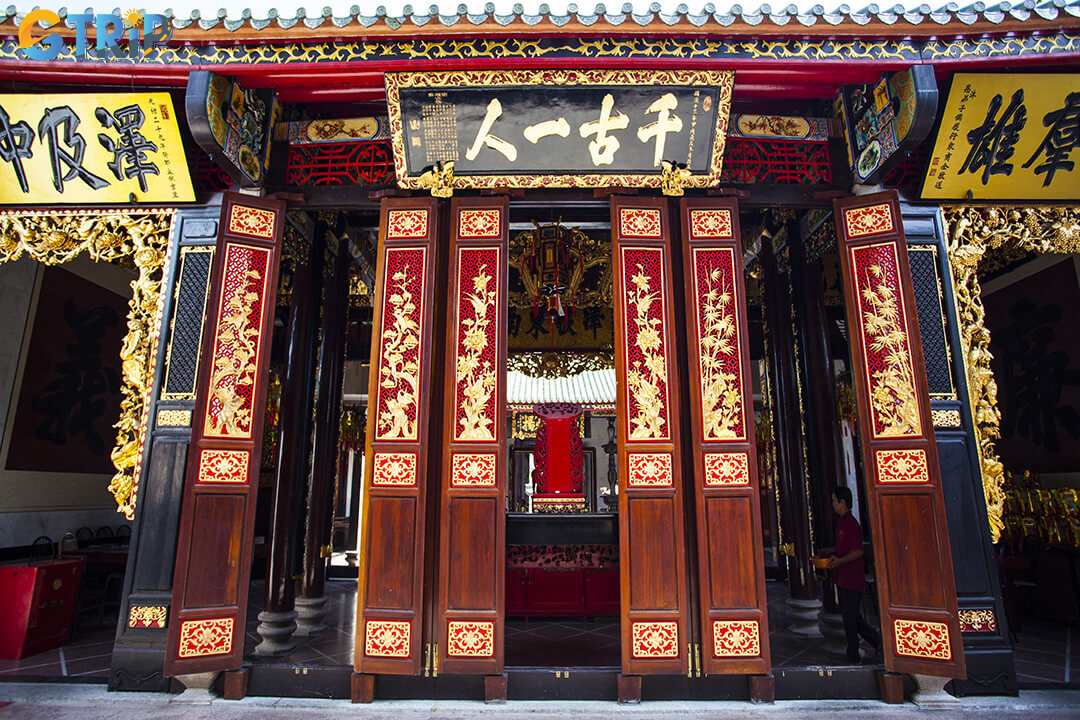
Admire the temple’s hanging wooden boats symbolizing ancestral voyages, ancient stone steles honoring past benefactors, and spiraling incense coils carrying prayers skyward
Festivals at Nghia An Assembly Hall
The temple truly comes alive during its traditional festivals, when the air fills with the sounds of drums, the scent of celebratory foods, and the energy of the local community. Visiting during one of these events is an unforgettable cultural experience. The two most significant celebrations are the Lantern Festival and Guan Di's Birthday. The Lantern Festival, held on the 15th day of the first lunar month, marks the first full moon of the new year with spectacular lantern displays, lion dances, and offerings for good fortune.
Guan Di's Birthday, celebrated on the 24th day of the sixth lunar month, is the temple's main event. The festivities include elaborate rituals, traditional opera performances, and a grand procession where the statue of Guan Di is paraded through the streets of Cho Lon. This Ong Pagoda Festival in Ho Chi Minh City is an incredible opportunity to witness the community's devotion. If your trip aligns, be sure to attend the two biggest festivals held at Guandi Temple for a deeply immersive experience.
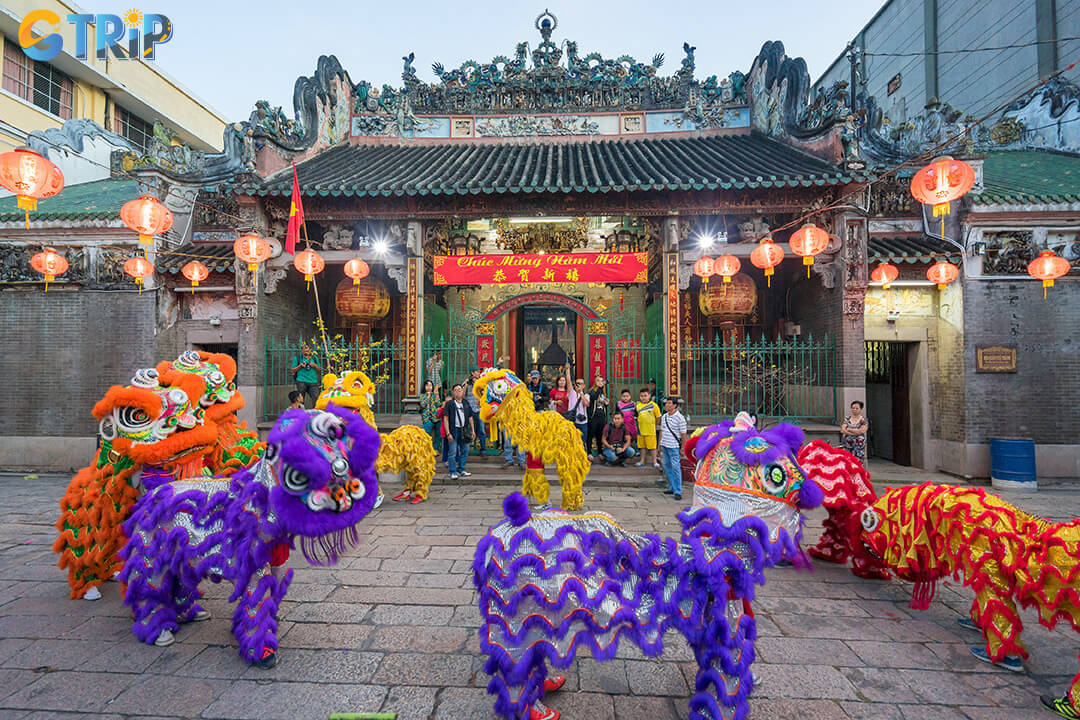
Experience Guandi Temple’s vibrant spirit during the Lantern Festival and Guan Di’s Birthday, marked by lively rituals, parades, and glowing lanterns
How to get to Guandi Temple in Ho Chi Minh City
The Guandi Temple is conveniently located in the centre of Cho Lon (formerly District 5) and is easily accessible from anywhere in Ho Chi Minh City.
- Ride-hailing app (Grab/XanhSM/Be): This is the most convenient option. Simply type "Chua Ong" or "Hoi Quan Nghia An" into the app. It's affordable and will drop you right at the entrance.
- Taxi: Taxis are readily available. Reputable brands like Vinasun and Mai Linh are recommended. Most drivers will know "Chua Ong".
- Public bus: For the adventurous and budget-conscious, several public bus routes pass through Cho Lon. Bus route 01 is a popular choice that connects the city center (Ben Thanh Market) with Cho Lon.
- Motorbike: If you're comfortable driving in Ho Chi Minh City's traffic, renting a motorbike gives you the flexibility to explore Cho Lon at your own pace. Parking is available nearby for a small fee.
Nearby attractions to Guandi Temple in Ho Chi Minh City
The Guandi Temple is located in a fascinating area, making it the perfect starting point for a half-day or full-day exploration of Chinatown. Combine your visit with these nearby attractions:
- Binh Tay Market: This is the massive central market of Cho Lon, designed by a French architect but funded by a Chinese merchant. It's a bustling hub of wholesale trade where you can find everything from fabrics and homewares to a fantastic food court offering authentic Vietnamese and Chinese dishes. It’s a feast for the senses.
- Thien Hau Pagoda: Just a short walk or drive from Guandi Temple, this is another of the city's most famous and beautiful Chinese temples. It's dedicated to Mazu, the goddess of the sea, and is known for its incredible porcelain dioramas and serene atmosphere. Visiting both temples offers a wonderful contrast in deities and architectural details.
- Cho Lon (Chinatown): Don't just tick off the sights, get lost in the neighborhood itself. Wander down the side streets, browse the traditional medicine shops, peek into hidden alleyways, and sample street food. The vibrant, chaotic, and wonderfully authentic atmosphere of Cho Lon is an attraction in its own right.

Located in the heart of Chinatown, Guandi Temple is surrounded by top attractions like Binh Tay Market, Thien Hau Pagoda, and the bustling streets of Cho Lon
Practical tips for visiting Guandi Temple in Ho Chi Minh City
To ensure your visit is enjoyable and respectful, keep these simple tips in mind. As a GTrip , being culturally aware is always the best way to connect with a new place.
- Dress respectfully: This is an active place of worship. Please ensure your shoulders and knees are covered. Avoid wearing shorts, short skirts, and tank tops.
- Be mindful of worshippers: People come here to pray and make offerings. Be quiet and respectful of their space. Move slowly and avoid walking in front of people who are praying at the altars.
- Photography etiquette: Photography is generally permitted, but be discreet. Do not use flash, as it can damage the ancient lacquer and disturb worshippers. Always be mindful and ask for permission before taking close-up photos of people.
- Best time to visit: The best time to visit is in the early morning (around 6:00 AM - 9:00 AM). The light is beautiful, it's less crowded, and you can witness the morning rituals of local devotees. Afternoons can get quite busy.
- Watch your step: The temple has raised door sills that you must step over. In Chinese culture, this serves to make you bow slightly upon entering and to prevent ghosts (who are believed to move in straight lines) from entering.
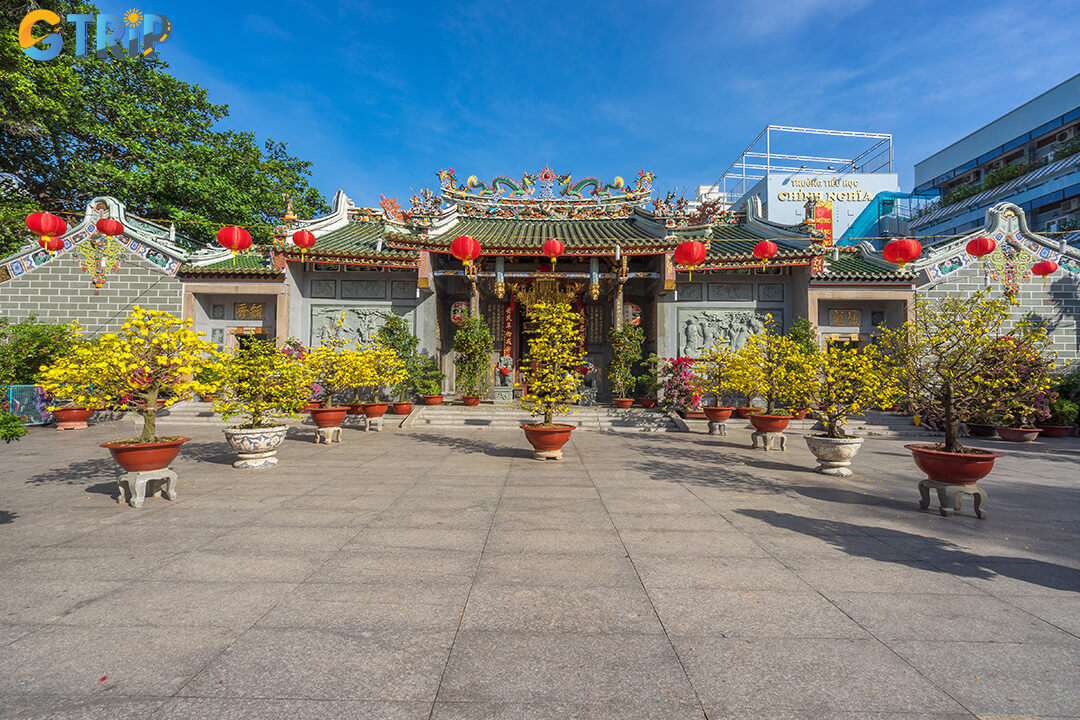
Follow these respectful tips for a meaningful visit to Guandi Temple, dress modestly, stay quiet, be mindful of photography, and visit early for the most peaceful experience
A visit to the Guandi Temple in Ho Chi Minh City is more than just a sightseeing stop, it's a profound cultural immersion. It's a place where you can feel the weight of history, admire the dedication of artists, and witness faith in action. From its mythical roof figures to the silent prayers rising with the incense smoke, the temple offers a quiet, powerful narrative of a community's journey and its enduring spirit. On your next GTrip adventure to Saigon, make sure you set aside time to explore this remarkable sanctuary. You’ll leave with a deeper appreciation for the rich cultural tapestry that makes this city so unique.

